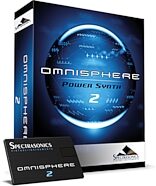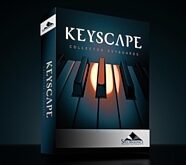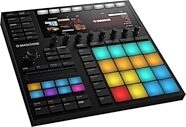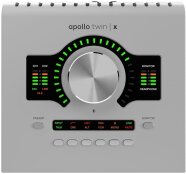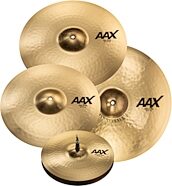Zero G Vocaloid Miriam Female Vocal VSTi (Windows)
No longer available at zZounds
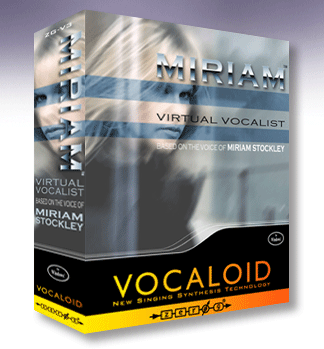
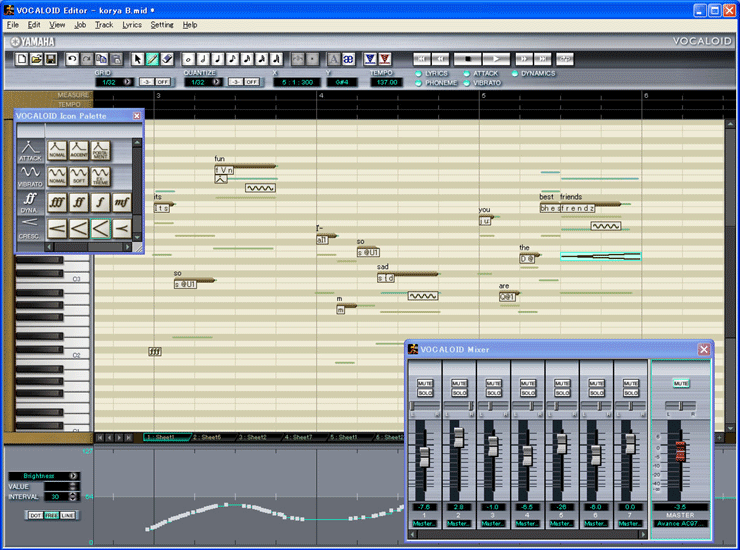
zZounds Gear Experts Say...
Yamaha's Singing Synthesis Technology, will sing any words you ask her, add expression to taste
Overview
The Human Voice. It's still the most expressive and emotionally communicative musical instrument available to mankind.
Unless, of course, you cannot sing. Or you don't have access to a quality singer when you need one, to bring reality to your ideas or your lyrics.
Either you can sing or you can't. Either you have a great singer who realizes your ideas or you don't. For most creative music producers, this means that in one sense the human voice has also always been a sonic boundary - a musical frontier, through thousands of years of evolution: Until now!!
A true revolution.
When it comes to creating quality vocal tracks, Yamaha's Vocaloid singing synthesis technology literally changes everything. The future will now be very different. The last bastion of human musical expression - the singing voice - has been realistically harnessed in synthesis. Now it's time for you to express your music in your own words. You can sing your heart out - through Miriam, Lola, Leon, and other Vocaloid virtual vocalists from Zero-G, thanks to the incredible new technology developed by Yamaha.
Miriam is a virtual female vocalist modelled on the voice of Miriam Stockley, and when Miriam is installed into your PC you will literally be able to create singing of superb quality and realism. Miriam can sing any words you wish in English - literally anything - be they beautiful lyrics or comical trivialities, Monteverdi madrigals or manic chants. You can create vocal tracks in almost any style of… read more singing, with any lyrics you want. You just enter the melodies, type in the lyrics, and synthesize. Then add expression to taste. Miriam puts singing under your total control, and the really mind-blowing thing is - Miriam can truly sound like a professional singing voice. With very little practice the results you get from Miriam will completely fool your friends - they will believe they are listening to a real singer performing. The question you will hear will always be "Who is that?", and not "What is that?".
About "Miriam" Stockley:
British singer Miriam Stockley has an ideal voice upon which to model a Vocaloid virtual vocalist. Given the list of artists Miriam has worked with - a list that includes such names as Tina Turner, Elton John, George Michael, Freddie Mercury, Chaka Khan, David Bowie, Seal and Adiemus - you may be surprised that you haven't heard her name before.
One of the most distinctive voices in the music industry, Miriam has probably sung on more hit records and with more success than most artists achieve in a lifetime. "Sonically, she's got ears like a bat" says vocal recording engineer Rod Houison. "She rolls out six part harmonies effortlessly. From a technical point of view she's in a class of her own." Being technically superb is only one side of Miriam. She also has a tremendously emotional delivery that can often send tingles down your spine, and is well known for her highly developed and unique vocal skills of multilayering vocal harmonies.
In countless high profile concerts she has provided backing vocals (including for Elton John, Annie Lennox, David Bowie and Seal). Miriam's extensive studio work brought her to the attention of Karl Jenkins who had heard about her unique vocal style, and this led to the highly successful Adiemus project, whereby Jenkins' compositions featuring Miriam's vocals were recorded with the London Philharmonic Orchestra and released as "Songs Of Sanctuary" by Adiemus. The album was a huge international success and, together with the follow-ups "Cantata Mundi" and "Dances of Time" has so far sold well in excess of two million copies worldwide. "Only You," a hit Miriam performed with the group Praise, charted number two in the UK. After completing the third Adiemus album Miriam expanded her musical audience by releasing solo albums on Virgin, which have become recognised as vocal masterpieces.
Your own lead and backing singers, 24/7, and no session fees.
With Vocaloid, creating your own professional sounding backing vocals is quick and easy - even for complex harmonies and arrangements. And as you develop your Vocaloid editing skills, you will find that even lead vocal lines become a reality, thanks to the arsenal of expression tools provided, which permit manipulation of the finest nuances. Make no mistake, we are talking about Miriam being capable of taking the role of lead singer on a hit record.
Imagine what all this means for your music!!
Now you can communicate emotion so directly. You can add humanity to any production in any style without needing a human. You can control and perform your own private virtual professional soul vocalist. You can even scat. You can create awesome backing vocals in harmonies for your tracks - in minutes. You can create stunning realism. Or... you can live in the exciting world between human and machine, where Miriam can even easily perform like a superhuman virtuoso android - as a true hybrid of human voice and synthesizer. The potential for innovation here is limited only by your own imagination.
What will you make Miriam sing?
Do you simply want her to perform your lyrical ideas as an aid to your songwriting process? Or will you use her freedom from human limitations to create stunningly innovative and experimental vocal effects? She can sing over a superb pitch range, she can sing much faster than a human could if you want her to, as fast as you like in fact, and she can jump any interval yet hit every note beautifully, If that's want you want her to do. And she'll never tire or complain.
In addition to singing any words or combination of syllables you can imagine, Miriam will spread any sustained vowel (or voiced consonant) across as many notes as you like, with perfect legato. You can select from several different natural vibrato types and drag and drop your chosen type to any note or notes, and control the time-position and amount of the vibrato for superb expressiveness and realism.
And that's just the beginning! - you have control over all of the following parameters, which you can bring to bear on any part of your creation:
Changing syllables/phonemes (e.g. enter "liddle" instead of "little" etc).
Timing of each note (precise position/length).
Vibrato (you can change its type/position/amount/frequency).
Volume.
Attack.
rescendo or diminuendo.
Pitch bend (amount, and positionable in time).
Glide (portamento).
Resonance (Frequency/bandwidth/amplitude).
Harmonics.
Noise.
Brightness.
Clearness.
Gender factor.
And of course, you can even change the singer (if you have purchased and installed more than one virtual singer) - perhaps get Leon or Lola to sing your creation instead of Miriam. Instantly.
How Does It Work Why does Miriam sound so real?
Few events have dramatically diverted the course of musical history. Synthesis, MIDI, Sampling - inventions of this magnitude are very rare events indeed. Singing Synthesis is such an event. Most acoustic instruments can be simulated well using various synthesis techniques, but (until Yamaha's Vocaloid techology came along) the singing voice resisted any serious simulation attempts. Hardly surprising, since singing has an extremely wide range of articulations, timbres, and transitions between sounds. And singing can communicate words as well as melody, which means you have a double layer of meaning, unlike other instruments.
The human ear is so used to hearing the voice that even the finest tonal shifts or anomalies are immediately noticed. However, Yamaha's Vocaloid is in fact a totally new vocal-synthesis technology, achieving a much higher level of sophistication in this exciting area! The team at the Yamaha Advanced System Development Center in Japan has created software that emulates the singing voice with incredible accuracy.
Zero-G's development team have been working closely with Yamaha to create many 'vocal fonts' (virtual vocalists) for the Vocaloid system. The team starts each project by recording a professional vocalist singing literally all possible phonemes and transitions between syllables. Each transition is slightly different depending on the particular combination of phonemes, and these differences play a big part in how we understand words and whether a vocal track sounds natural or artificial. For example, the phoneme "p" sounds slightly different at the beginning of a word than it does at the end, and it affects the vowels next to it differently than, say, the phoneme "t".
The recordings of the professional singers are converted to the frequency domain using Fast Fourier Transform and divided into thousands of separate phonetic transitions which are processed in a unique way and then stored for use with the Vocaloid synthesis engine. Expressive tools such as vibrato, pitch bend, and attack are also derived from the real singing and stored separately.
To create a vocal track, you enter music and lyrics into the Vocaloid Editor (see screenshot). The melody can be entered by hand in the piano-roll style Editor or imported from a Standard MIDI File; the words are entered manually (either as words or as phonemes). Expressive elements can be imported from a MIDI File previously saved by the Vocaloid Editor, or entered via a graphic palette using drag-and-drop. Further detailed programming of expression parameters can be done graphically, for finely detailed results.
The data that you have entered in the Editor is sent to the synthesis engine, which fetches what it needs from the phonetic and expression databases to synthesize the track. To sing the word "part", for example, the software combines four elements from the phonetic database: "p" (as it sounds at the beginning of a word), "p-ar" (the transition from "p" to "ar"), "ar-t" (the transition from "ar" to "t"), and "t" (as it sounds at the end of a word). The two "ar" elements are blended together, and the resulting vowel "a" is lengthened as necessary to accommodate your chosen melody and rhythm.
Different pitches are derived by shifting the fundamental and overtones while leaving the vowel formants relatively untouched. The database elements were derived from phrases originally sung at different pitches, limiting the amount of shifting the engine needs to do (and therefore improving ultimate realism). A Pentium 4/ 2GHz computer takes less than one-third real time to render the track in the frequency domain and convert it into the time domain for use. For example, a 1-minute track can be rendered in less than 20 seconds.
Unlimited Horizons
The potential for Yamaha's Singing Synthesis Technology is virtually unlimited. Miriam (together with Leon and Lola) represent the genesis of the new era of virtual singing Pretty soon you are going to hear synthesized vocals in a lot of music. Don't get left out of the picture. Experience the difference Miriam can make for yourself!
Vocaloid "Miriam" - Vocals without frontiers - The holy grail of synthesis - She will make your heart sing!!
Package Includes:
Vocaloid Editor
Vocaloid VST Instrument
Vocaloid Miriam Female Vocal Font
Vocaloid Editor Features:
Vocal Edit & Synthesis environment.
Piano-roll note editor.
Easy-to use lyric editing.
Drag & Drop musical expression assigning.
Reads Vocaloid vocal libraries.
Synthesizing vocal tracks.
Saving vocal data as wave files.
Up to 16 vocal tracks.
Standard MIDI File Input/Output
Vocaloid VST/ReWire Instrument:
Reads Vocaloid vocal libraries.
Plays vocal MIDI tracks generated by Vocaloid Editor via VST- or ReWire-compatible host sequencer.
Easy to manipulate voice characteristics.
Vocaloid Miriam Vocal Library (virtual female vocalist):
Virtual vocalist modelled on the voice of Miriam STOCKLEY, the voice of the multi-million-selling ADIEMUS albums.
Complete female voice in English, in professional quality.
Suits all pop and dance music styles, but also Celtic and many other styles.
Full coverage of phonemes. You can use any English lyrics you want.
Vibrato templates and expression templates as typically used in natural singing. read less
Unless, of course, you cannot sing. Or you don't have access to a quality singer when you need one, to bring reality to your ideas or your lyrics.
Either you can sing or you can't. Either you have a great singer who realizes your ideas or you don't. For most creative music producers, this means that in one sense the human voice has also always been a sonic boundary - a musical frontier, through thousands of years of evolution: Until now!!
A true revolution.
When it comes to creating quality vocal tracks, Yamaha's Vocaloid singing synthesis technology literally changes everything. The future will now be very different. The last bastion of human musical expression - the singing voice - has been realistically harnessed in synthesis. Now it's time for you to express your music in your own words. You can sing your heart out - through Miriam, Lola, Leon, and other Vocaloid virtual vocalists from Zero-G, thanks to the incredible new technology developed by Yamaha.
Miriam is a virtual female vocalist modelled on the voice of Miriam Stockley, and when Miriam is installed into your PC you will literally be able to create singing of superb quality and realism. Miriam can sing any words you wish in English - literally anything - be they beautiful lyrics or comical trivialities, Monteverdi madrigals or manic chants. You can create vocal tracks in almost any style of… read more singing, with any lyrics you want. You just enter the melodies, type in the lyrics, and synthesize. Then add expression to taste. Miriam puts singing under your total control, and the really mind-blowing thing is - Miriam can truly sound like a professional singing voice. With very little practice the results you get from Miriam will completely fool your friends - they will believe they are listening to a real singer performing. The question you will hear will always be "Who is that?", and not "What is that?".
About "Miriam" Stockley:
British singer Miriam Stockley has an ideal voice upon which to model a Vocaloid virtual vocalist. Given the list of artists Miriam has worked with - a list that includes such names as Tina Turner, Elton John, George Michael, Freddie Mercury, Chaka Khan, David Bowie, Seal and Adiemus - you may be surprised that you haven't heard her name before.
One of the most distinctive voices in the music industry, Miriam has probably sung on more hit records and with more success than most artists achieve in a lifetime. "Sonically, she's got ears like a bat" says vocal recording engineer Rod Houison. "She rolls out six part harmonies effortlessly. From a technical point of view she's in a class of her own." Being technically superb is only one side of Miriam. She also has a tremendously emotional delivery that can often send tingles down your spine, and is well known for her highly developed and unique vocal skills of multilayering vocal harmonies.
In countless high profile concerts she has provided backing vocals (including for Elton John, Annie Lennox, David Bowie and Seal). Miriam's extensive studio work brought her to the attention of Karl Jenkins who had heard about her unique vocal style, and this led to the highly successful Adiemus project, whereby Jenkins' compositions featuring Miriam's vocals were recorded with the London Philharmonic Orchestra and released as "Songs Of Sanctuary" by Adiemus. The album was a huge international success and, together with the follow-ups "Cantata Mundi" and "Dances of Time" has so far sold well in excess of two million copies worldwide. "Only You," a hit Miriam performed with the group Praise, charted number two in the UK. After completing the third Adiemus album Miriam expanded her musical audience by releasing solo albums on Virgin, which have become recognised as vocal masterpieces.
Your own lead and backing singers, 24/7, and no session fees.
With Vocaloid, creating your own professional sounding backing vocals is quick and easy - even for complex harmonies and arrangements. And as you develop your Vocaloid editing skills, you will find that even lead vocal lines become a reality, thanks to the arsenal of expression tools provided, which permit manipulation of the finest nuances. Make no mistake, we are talking about Miriam being capable of taking the role of lead singer on a hit record.
Imagine what all this means for your music!!
Now you can communicate emotion so directly. You can add humanity to any production in any style without needing a human. You can control and perform your own private virtual professional soul vocalist. You can even scat. You can create awesome backing vocals in harmonies for your tracks - in minutes. You can create stunning realism. Or... you can live in the exciting world between human and machine, where Miriam can even easily perform like a superhuman virtuoso android - as a true hybrid of human voice and synthesizer. The potential for innovation here is limited only by your own imagination.
What will you make Miriam sing?
Do you simply want her to perform your lyrical ideas as an aid to your songwriting process? Or will you use her freedom from human limitations to create stunningly innovative and experimental vocal effects? She can sing over a superb pitch range, she can sing much faster than a human could if you want her to, as fast as you like in fact, and she can jump any interval yet hit every note beautifully, If that's want you want her to do. And she'll never tire or complain.
In addition to singing any words or combination of syllables you can imagine, Miriam will spread any sustained vowel (or voiced consonant) across as many notes as you like, with perfect legato. You can select from several different natural vibrato types and drag and drop your chosen type to any note or notes, and control the time-position and amount of the vibrato for superb expressiveness and realism.
And that's just the beginning! - you have control over all of the following parameters, which you can bring to bear on any part of your creation:
Changing syllables/phonemes (e.g. enter "liddle" instead of "little" etc).
Timing of each note (precise position/length).
Vibrato (you can change its type/position/amount/frequency).
Volume.
Attack.
rescendo or diminuendo.
Pitch bend (amount, and positionable in time).
Glide (portamento).
Resonance (Frequency/bandwidth/amplitude).
Harmonics.
Noise.
Brightness.
Clearness.
Gender factor.
And of course, you can even change the singer (if you have purchased and installed more than one virtual singer) - perhaps get Leon or Lola to sing your creation instead of Miriam. Instantly.
How Does It Work Why does Miriam sound so real?
Few events have dramatically diverted the course of musical history. Synthesis, MIDI, Sampling - inventions of this magnitude are very rare events indeed. Singing Synthesis is such an event. Most acoustic instruments can be simulated well using various synthesis techniques, but (until Yamaha's Vocaloid techology came along) the singing voice resisted any serious simulation attempts. Hardly surprising, since singing has an extremely wide range of articulations, timbres, and transitions between sounds. And singing can communicate words as well as melody, which means you have a double layer of meaning, unlike other instruments.
The human ear is so used to hearing the voice that even the finest tonal shifts or anomalies are immediately noticed. However, Yamaha's Vocaloid is in fact a totally new vocal-synthesis technology, achieving a much higher level of sophistication in this exciting area! The team at the Yamaha Advanced System Development Center in Japan has created software that emulates the singing voice with incredible accuracy.
Zero-G's development team have been working closely with Yamaha to create many 'vocal fonts' (virtual vocalists) for the Vocaloid system. The team starts each project by recording a professional vocalist singing literally all possible phonemes and transitions between syllables. Each transition is slightly different depending on the particular combination of phonemes, and these differences play a big part in how we understand words and whether a vocal track sounds natural or artificial. For example, the phoneme "p" sounds slightly different at the beginning of a word than it does at the end, and it affects the vowels next to it differently than, say, the phoneme "t".
The recordings of the professional singers are converted to the frequency domain using Fast Fourier Transform and divided into thousands of separate phonetic transitions which are processed in a unique way and then stored for use with the Vocaloid synthesis engine. Expressive tools such as vibrato, pitch bend, and attack are also derived from the real singing and stored separately.
To create a vocal track, you enter music and lyrics into the Vocaloid Editor (see screenshot). The melody can be entered by hand in the piano-roll style Editor or imported from a Standard MIDI File; the words are entered manually (either as words or as phonemes). Expressive elements can be imported from a MIDI File previously saved by the Vocaloid Editor, or entered via a graphic palette using drag-and-drop. Further detailed programming of expression parameters can be done graphically, for finely detailed results.
The data that you have entered in the Editor is sent to the synthesis engine, which fetches what it needs from the phonetic and expression databases to synthesize the track. To sing the word "part", for example, the software combines four elements from the phonetic database: "p" (as it sounds at the beginning of a word), "p-ar" (the transition from "p" to "ar"), "ar-t" (the transition from "ar" to "t"), and "t" (as it sounds at the end of a word). The two "ar" elements are blended together, and the resulting vowel "a" is lengthened as necessary to accommodate your chosen melody and rhythm.
Different pitches are derived by shifting the fundamental and overtones while leaving the vowel formants relatively untouched. The database elements were derived from phrases originally sung at different pitches, limiting the amount of shifting the engine needs to do (and therefore improving ultimate realism). A Pentium 4/ 2GHz computer takes less than one-third real time to render the track in the frequency domain and convert it into the time domain for use. For example, a 1-minute track can be rendered in less than 20 seconds.
Unlimited Horizons
The potential for Yamaha's Singing Synthesis Technology is virtually unlimited. Miriam (together with Leon and Lola) represent the genesis of the new era of virtual singing Pretty soon you are going to hear synthesized vocals in a lot of music. Don't get left out of the picture. Experience the difference Miriam can make for yourself!
Vocaloid "Miriam" - Vocals without frontiers - The holy grail of synthesis - She will make your heart sing!!
Package Includes:
Vocaloid Editor
Vocaloid VST Instrument
Vocaloid Miriam Female Vocal Font
Vocaloid Editor Features:
Vocal Edit & Synthesis environment.
Piano-roll note editor.
Easy-to use lyric editing.
Drag & Drop musical expression assigning.
Reads Vocaloid vocal libraries.
Synthesizing vocal tracks.
Saving vocal data as wave files.
Up to 16 vocal tracks.
Standard MIDI File Input/Output
Vocaloid VST/ReWire Instrument:
Reads Vocaloid vocal libraries.
Plays vocal MIDI tracks generated by Vocaloid Editor via VST- or ReWire-compatible host sequencer.
Easy to manipulate voice characteristics.
Vocaloid Miriam Vocal Library (virtual female vocalist):
Virtual vocalist modelled on the voice of Miriam STOCKLEY, the voice of the multi-million-selling ADIEMUS albums.
Complete female voice in English, in professional quality.
Suits all pop and dance music styles, but also Celtic and many other styles.
Full coverage of phonemes. You can use any English lyrics you want.
Vibrato templates and expression templates as typically used in natural singing. read less
Specs
Minimum System Requirements:
Windows XP or Windows 2000.
Pentium III, 1 GHz or faster.
512MB of RAM or more.
Approx 500 Mb Hard disk space or more (actual amount to be advised nearer release)
CD-ROM or DVD-ROM Drive
SVGA Display (1024x768)
Sound Card with Microsoft DirectSound Compatible driver.
LAN/network card must be installed, or a USB network card must be connected to the USB port (See more info about LAN/network card requirement, below)
Recommended System:
Windows XP.
Pentium 4, 1.7 GHz or faster.
1 GB of RAM or more
Supported Interfaces & Standards: VST 2.0, ReWire, Windows MME.
About LAN/network card requirement:
Important: The computer on which you install and use Vocaloid must be equipped with a LAN/network Card. Installation and Activation of Vocaloid also requires the computer to be connected to the internet via the LAN card, or you will need to at least have access to a separate Windows XP/2000 computer that is connected to the internet.
When you install the software on your computer, either at the same time or some time soon thereafter, you activate the software by connecting to the Vocaloid activation server via the Internet. But don't worry if you can't connect to the Internet immediately, you can still use Vocaloid for an initial temporary activation period of 5 days.
When you do perform the activation step, your computer must be fitted with a LAN/network card via which it is connected to the Internet. After activation you do not need to be connected to the Internet or a network to use Vocaloid, but the LAN card you used for activation must remain installed in your computer. It is one of the components used to identify your PC. In other words, the LAN card works as a "dongle". Therefore even if you connect to the internet via a modem, you still need a LAN card (but it does not have to be connected to the network). One simple and convenient solution is to use a USB network device which simply plugs into a USB port on your computer and therefore does not require the opening of your computer's case. Such USB network cards are available from most computer retailers and an excellent quality example can typically be purchased for under 30 US dollars.
The installation procedure for adding additional Vocaloid virtual vocalist products is exactly the same as outlined above. You will still need to activate your new Vocaloid product as described above, but only the newly-added component(s) will need to be activated. For example, if you had already installed the Zero-G "Lola" vocal library and you would then like to install "Leon", you would select "Custom installation" and select only the required components.
Furthermore, in order to also obtain technical support and gain access to help and information concerning Zero-G Vocaloid products, you MUST also register your Vocaloid product at the Zero-G website.
Windows XP or Windows 2000.
Pentium III, 1 GHz or faster.
512MB of RAM or more.
Approx 500 Mb Hard disk space or more (actual amount to be advised nearer release)
CD-ROM or DVD-ROM Drive
SVGA Display (1024x768)
Sound Card with Microsoft DirectSound Compatible driver.
LAN/network card must be installed, or a USB network card must be connected to the USB port (See more info about LAN/network card requirement, below)
Recommended System:
Windows XP.
Pentium 4, 1.7 GHz or faster.
1 GB of RAM or more
Supported Interfaces & Standards: VST 2.0, ReWire, Windows MME.
About LAN/network card requirement:
Important: The computer on which you install and use Vocaloid must be equipped with a LAN/network Card. Installation and Activation of Vocaloid also requires the computer to be connected to the internet via the LAN card, or you will need to at least have access to a separate Windows XP/2000 computer that is connected to the internet.
When you install the software on your computer, either at the same time or some time soon thereafter, you activate the software by connecting to the Vocaloid activation server via the Internet. But don't worry if you can't connect to the Internet immediately, you can still use Vocaloid for an initial temporary activation period of 5 days.
When you do perform the activation step, your computer must be fitted with a LAN/network card via which it is connected to the Internet. After activation you do not need to be connected to the Internet or a network to use Vocaloid, but the LAN card you used for activation must remain installed in your computer. It is one of the components used to identify your PC. In other words, the LAN card works as a "dongle". Therefore even if you connect to the internet via a modem, you still need a LAN card (but it does not have to be connected to the network). One simple and convenient solution is to use a USB network device which simply plugs into a USB port on your computer and therefore does not require the opening of your computer's case. Such USB network cards are available from most computer retailers and an excellent quality example can typically be purchased for under 30 US dollars.
The installation procedure for adding additional Vocaloid virtual vocalist products is exactly the same as outlined above. You will still need to activate your new Vocaloid product as described above, but only the newly-added component(s) will need to be activated. For example, if you had already installed the Zero-G "Lola" vocal library and you would then like to install "Leon", you would select "Custom installation" and select only the required components.
Furthermore, in order to also obtain technical support and gain access to help and information concerning Zero-G Vocaloid products, you MUST also register your Vocaloid product at the Zero-G website.
Reviews
Reviewers gave this product an overall rating of 3.5 out of 5 stars.
(4 ratings)
Submitted March 27, 2005 by a customer from yahoo.com
"Try it out on a fast computer."
Verified Purchaser
zZounds has verified that this reviewer purchased this specific product from us.
Hopefully Zero-G will make a better program to run the technology and make it easier to use.
Sound
Miriam has a difinite European Vocal Sound. That is definitely different when you are used to american vocals. This program is best used over thick accompaniment or background music. Also best used for long notes than short ones.
Features
The program has a lot of ways to manipulate the voice by tweaking the many parameters that are built in to the program.
Quality
Good Quality
Value
This program is worth every penny for certain vocals and worthless for more personal, expressive types of vocals.
Manufacturer Support
There is only support from Zero - G's website. I been there a few times not really for support but to look around. It seems they have good support for it.
The Wow Factor
It is definitely worth getting if you have a lot of different vocals in your agenda. Try it out and see what it can do.
Musical Background:
Classically trained musician turned DJ
Musical Style:
Progressive dance
Did you find this review helpful?
Thanks for your opinion!
No longer available at zZounds
In most cases, a product is unavailable because it has been discontinued by the manufacturer
This is a carousel with product cards. Use the previous and next buttons to navigate.


